Some brand marketers and bloggers skip Instagram Reels (released 2020) because of their similarity to TikTok, which is fundamentally wrong. The two platforms are developing rapidly — and the difference between them is growing. The article helps you choose the platform if you are only starting a channel and advises promotion options.
Instagram felt no excitement over Reels: the similarity with TikTok format, the lack of transparency in the promotion algorithms, low growth rates of IGTV videos leaded to skepticism. After a while, the difference between the platforms became obvious, despite the similar functionality.
One of the main differences is the perception of video content. TikTok initially suggests this format, but Instagram Reels are designed as a mechanic to keep users inside the social network, not to let them go to another one. In fact, this is one of the tools.
The active introduction of Instagram Reels into the content plan is a winning position for both bloggers and brands. The so-called early adopters get more profit due to low competition and hitting the trends rapidly. And since Reels and TikTok are still used reluctantly — often for cross-posting — it is definitely worth trying.
What the difference between the Reels and TikTok audiences is
As always, the first step in building a content plan is the analysis of the target audience. We turn to the core audience to understand which platform is suitable for promoting a brand or an influencer. The main goal is to get audience reactions.
Instagram is a social network, so for algorithms, it is vital whom a user is following and what is in their feed when they scroll it. The essence of this platform, like any social network, is to stimulate communication between people. The fundamental dissimilarity of TikTok is that it is not a social network. The interests of users are more significant than their circle of acquaintances: videos on which topics a person shares with friends, watch to the end, and comments.
On Instagram, both creators and their followers are getting older. The TikTok active audience is younger: in particular — 14-18 years old and 18-21 years old. But the stereotype that brands have nothing to do here since only children watch the videos — goes away. The audience of each age group can find the content of interest due to the feed based on the user interests.
One of the most striking examples is the juice manufacturer Ocean Spray. Nathan Apodaca made a short video where he rides a skateboard and drinks juice of this brand to the Fleetwood Mac ‘Dreams’ song. TikTok views raised to 20 million in just a couple of days. The shares of Ocean Spray rose in price, the track took the top lines of iTunes, and the blogger himself bought his first house with the money he earned.
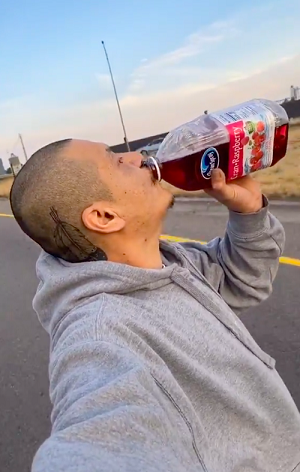
Algorithms
As for the differences in algorithms, it’s worth starting with the most key ones. Users, on average, spend 46 minutes a day watching TikTok according to research. It is 28 minutes a day on Instagram. On Instagram, new accounts do not get coverage — TikTok gives an opportunity even for new videos on new accounts to get into Recommendations, depending on the interests of other users. In addition, on TikTok, old videos can get reactions sometime later, which is rare with Reels.
The task of the algorithms on both platforms is to create a personalized work experience for each user. If you follow the recommendations, you will have better chances of getting into trends increase for any platform. It is worth remembering only the specifics of interaction with content.
Instagram Reels Algorithms
The minimum plan to get into the Recommendations: well-targeted hashtags, trending music or masks, pay attention to the design of video covers, develop CTA and publish announcements of a new video in the feed and stories.
Hashtags have two functions — they help users in the search and increase awareness if branded tags are present. It is necessary to choose no more than 30 for one video. The hashtags of the first order are #reels and #reelsinstagram.
Trending music is easier to take from the top recommended at first. The best way to proceed is visual experience in this case— you start analyzing trends, and popular videos, applying them to your content — and over time, you better understand how to create your trends.
The design of the Reels covers helps avoid a situation when the title image, for example, if it is a freeze-frame from a video, does not reflect the essence of what is happening in the video. Additionally, freeze-frame often look blurry — that significantly decreases the user desire to click.
Thinking over a CTA — what a user exactly will do after watching the video is another vital part of creating content for Reels. There should be something similar to the call to ‘subscribe to the channel and like’ used on YouTube.
After the video is created and posted, prepare brief announcements for a story and the main feed. It will help subscribers go to the video faster, view it quicker, and react. Getting higher and higher reach, a video will start getting recommendations from a similar audience that gives organic growth.
TikTok algorithms
At the end of 2021, the American The New York Times disclosed an internal document with algorithms and the work of recommendations inside the application. Before publishing, TikTok shared information that the neural network selects content based on user data and considers likes, reposts, and comments.
According to The New York Times, the two factors count: ‘time spent in the application’ (minutes or hours actually spent) and ‘retention’ (bringing a person back). These two key indices are considered and recommendations bases on what content the user interacts with. The formula mentioned in the document has two more indicators — likes and comments.
Thus, the more information TikTok has about users, the more accurate recommendations they get. For example, if a person not only watches videos but also posts their own, the service has a better opportunity to understand interests. However, the app will not show the same type of content because it may bore users — and they will exit the application.
There is a factor of ‘creation quality’ — the quality level of the published content. The algorithms consider the frequency of creation, the frequency of returns, and monetization. But the publication did not explain how these criteria count and evaluated. Generally, it indicates that the author’s success on the platform also affects the recommendations.
The difference between video genres
Traditionally, some trends appear on TikTok and then actively develop in Instagram Reels, but the differences between the videos published on the platforms are already visible. First of all, this concerns the genre component. The second set of features is related to visual design and stylistics, which it is vital to know and remember when creating commercials.
Let’s look at the most viral video categories on each platform and figure out the difference in video content.
Instagram Reels trends
‘How to’
Instagram users are used to the fact that the content posted on the platform focuses on education — tips, recommendations, and personal experience. Users are more willing to save and share posts with helpful information. The same trend is in Reels.
The general ‘how to …’ can be implemented in different ways in terms of presentation. The main thing is to provide life hacks that work and do not require special costs and can be implemented without special skills. The core principle is to talk not about yourself but the audience.
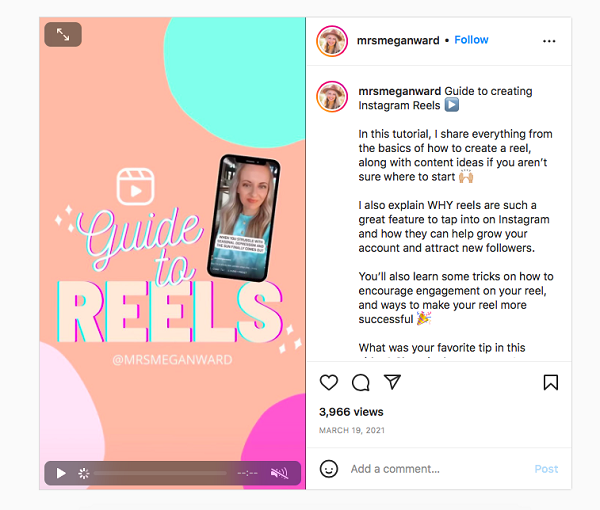
Backstage
The so-called ‘backstage’ also gets the interest of followers. The simplest example is cooking. If we talk about brands, designers share the backstage from the shows, and photographers show how the filming process goes.
For companies, such content format is an opportunity to get closer to the buyer and build loyalty and trust — because people see with their own eyes which team is behind the brand name, how the product is made, and what materials are used.
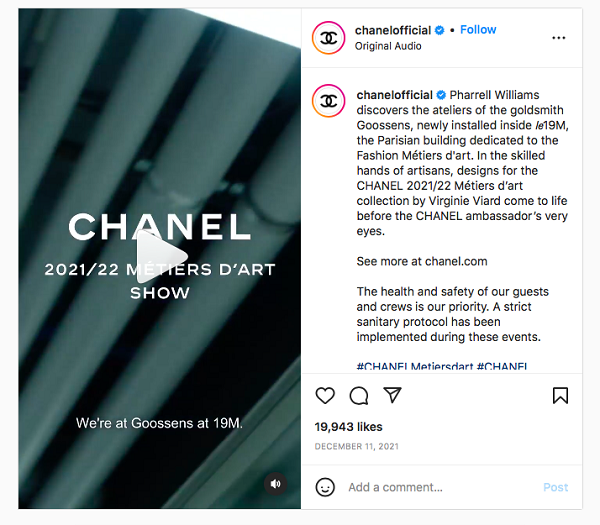
Lifestyle
Sketches are understandable and familiar to everyone — everyday scenes, a story about relationships between people, anecdotes that you want to laugh at. Another version of viral content shared with friends with the comment: ‘Oh! It is us!’
Most creators work alone, playing the roles of several characters — so everyone can create such videos. It is vital to prepare stage requisites and write a script in advance with a beginning, climax, and denouement.
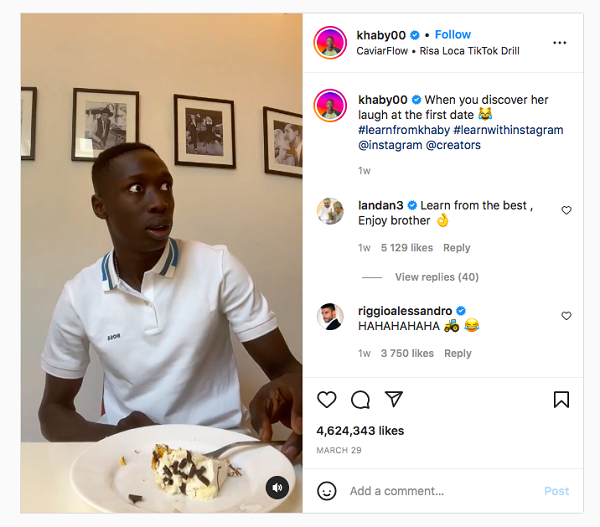
Lists
It can be a short selection in text format with illustrations — the usual lists, collections, tops. Now users do not need to read a long text in the post but can immediately see a short extract with explanations and recommendations.
For example, a hotel in Rome can publish a selection of ‘Top 7 restaurants in Rome where it is worth having lunch at least once in your life’ or ‘10 popular routes in Italy.’ It hits the target audience, which willingly reviews video collections.

Before and after
The format is an old-timer Reels, which does not lose relevance over time. It allows you to quickly demonstrate the result of any work done in a short video. The creators show where they started and what they ended up with.
It increases engagement as it heats the interest to watch to the end. It fits perfectly into most topics. For example, recipes (products / ready-made dish); makeup (before transformation / after); repairs (before/ after); bookcase (without books / with books) and so on.
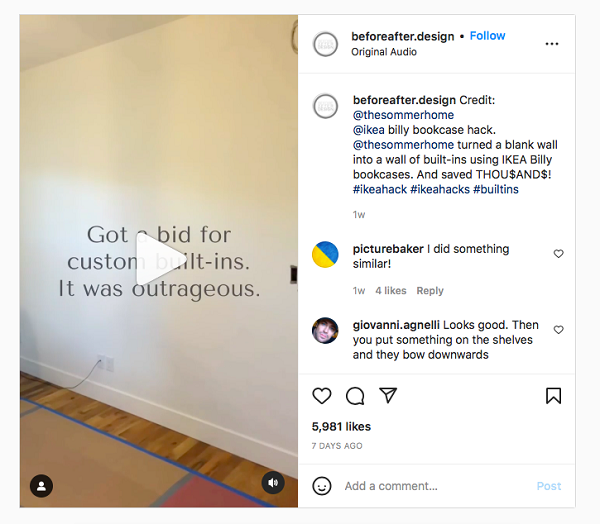
TikTok trends
Challenges
Challenges are ‘viral’ — people share them with friends; users want to repeat a challenge themself. Advertising campaigns of major brands have also become examples of such challenges. BMW has released a series of videos collaborating with famous TikTok bloggers, where TikTokers dance in cars. The hashtag #THE1Challenge unites these videos. As a result, each TikTok video has been viewed more than 7 million times.
The Ralph Lauren brand, the official outfitter of the US Open tournament, has launched an advertising campaign with Diana Silvers. Users were asked to demonstrate real-life victories. The authors whose videos under the hashtag #WinningRL gained more views were gifted a Polo Ralph Lauren US Open.
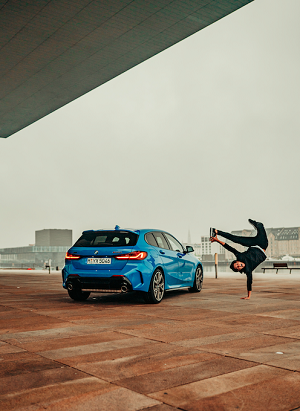
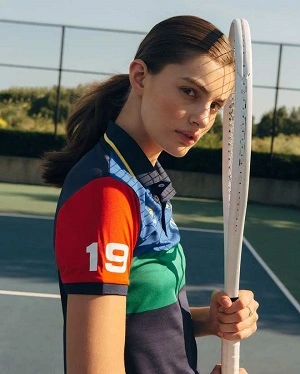
<
Videos for different subcultures
TikTok supports communities on narrowly focused topics. They are book lovers, geeks, representatives of online subcultures — e.g., cottagecore. In Reels, videos for various communities are not very popular, so TikTok is a leader in this section. Such videos do not have the highest reach (compared to other topics), but they help find the target audience.
Thanks to the hashtag navigation, users can easily find the content of interest, thereby ‘teaching’ algorithms what they are interested in exactly. It is an excellent method of promotion for bloggers with not the most popular topics.
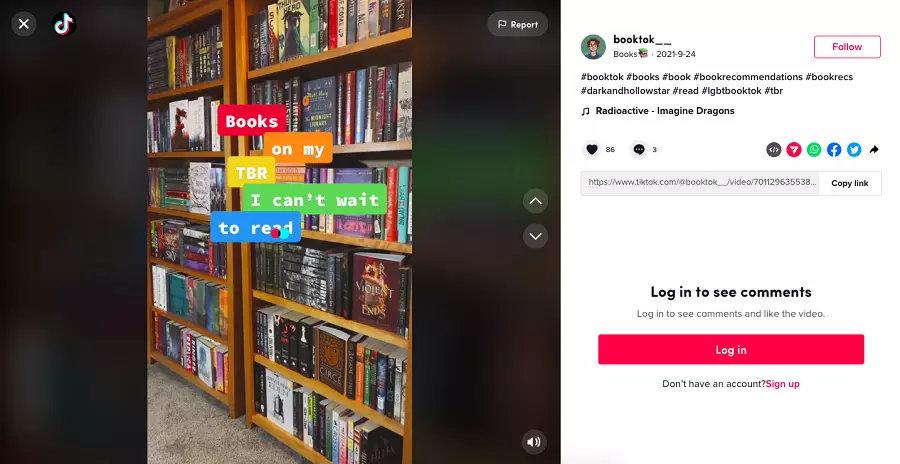
Dances
Another popular genre. You don’t have to be a professional dancer to shoot a TikTok dance, but dance schools actively use this type of content to promote their business. An alternative option is to combine the genre with humor or some strong idea.
For example, in this video, each movement is visualized through emoticons. It is easier to remember and repeat after the girl in the video. Combined with the charisma of the creator and the incendiary track, the video gets coverage and reactions.
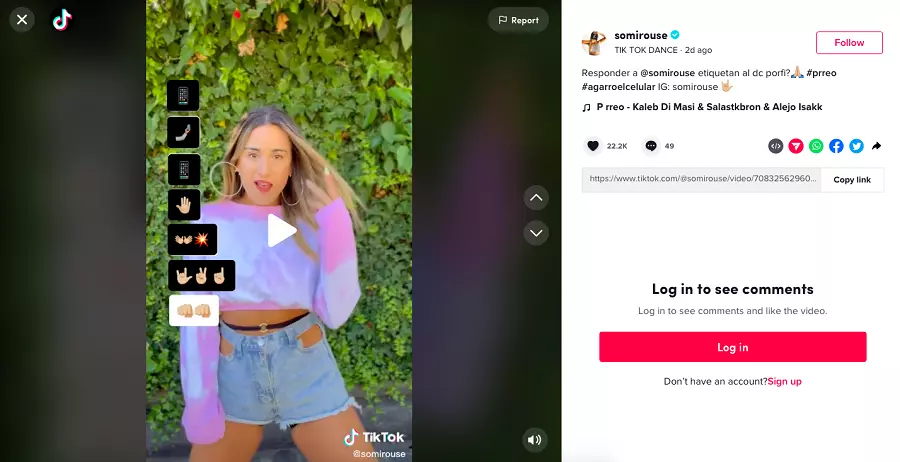
Pranks
Pranks and social experiments remain popular on TikTok. The main thing is not to go over ethical norms and rely on humor and not on the desire to offend or tease people participating in such videos.
Often accounts are built entirely on shooting and publishing pranks. An example is a Prankmecomedy account, where a series of videos are made for each prank. The numbers are impressive: the videos get 1 million and up to 1.4 million views.
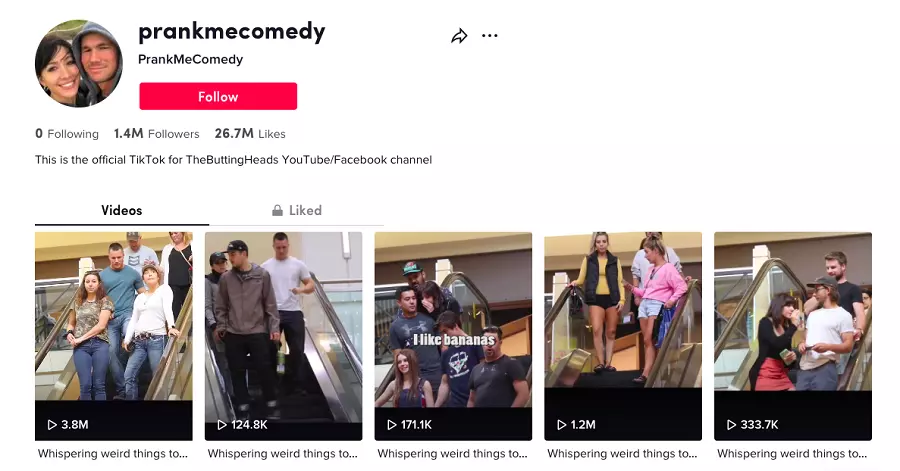
Life situations
Comic life situations are told in the first person. The heroes of the videos can be not only the creators themselves but also, for example, their pets, which adds even more attractiveness to the video: cats and children are the invariable heroes of viral content.
For example, a funny video from the Ambsbeega channel called ‘Your cat tries to eat you.’ The situation is familiar to all cat lovers, and the pet itself plays the core role.
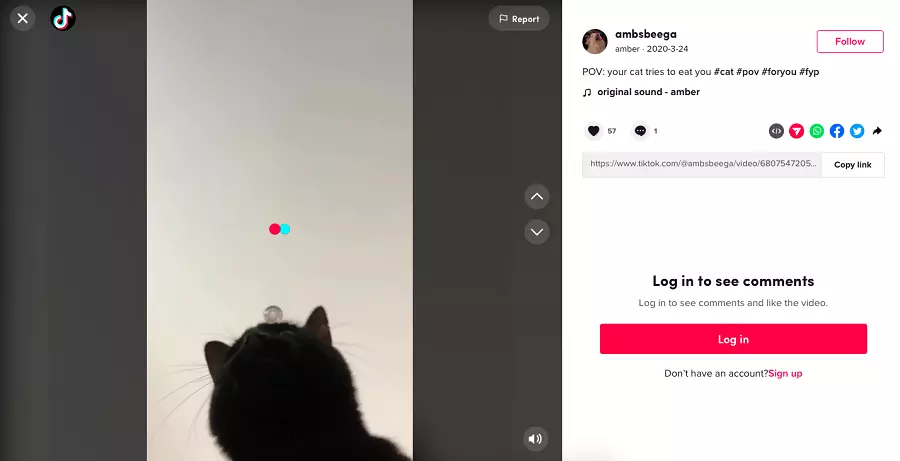
Unpacking, tutorials, life hacks about everyday life, and personal experience remains popular on Instagram — all that helps the user feel better, pump up their skills, or save money or time on solving a problem. TikTok is famous for experimental content videos for different subcultures, pranks, and unusual challenges. And most of the trends come from TikTok.





